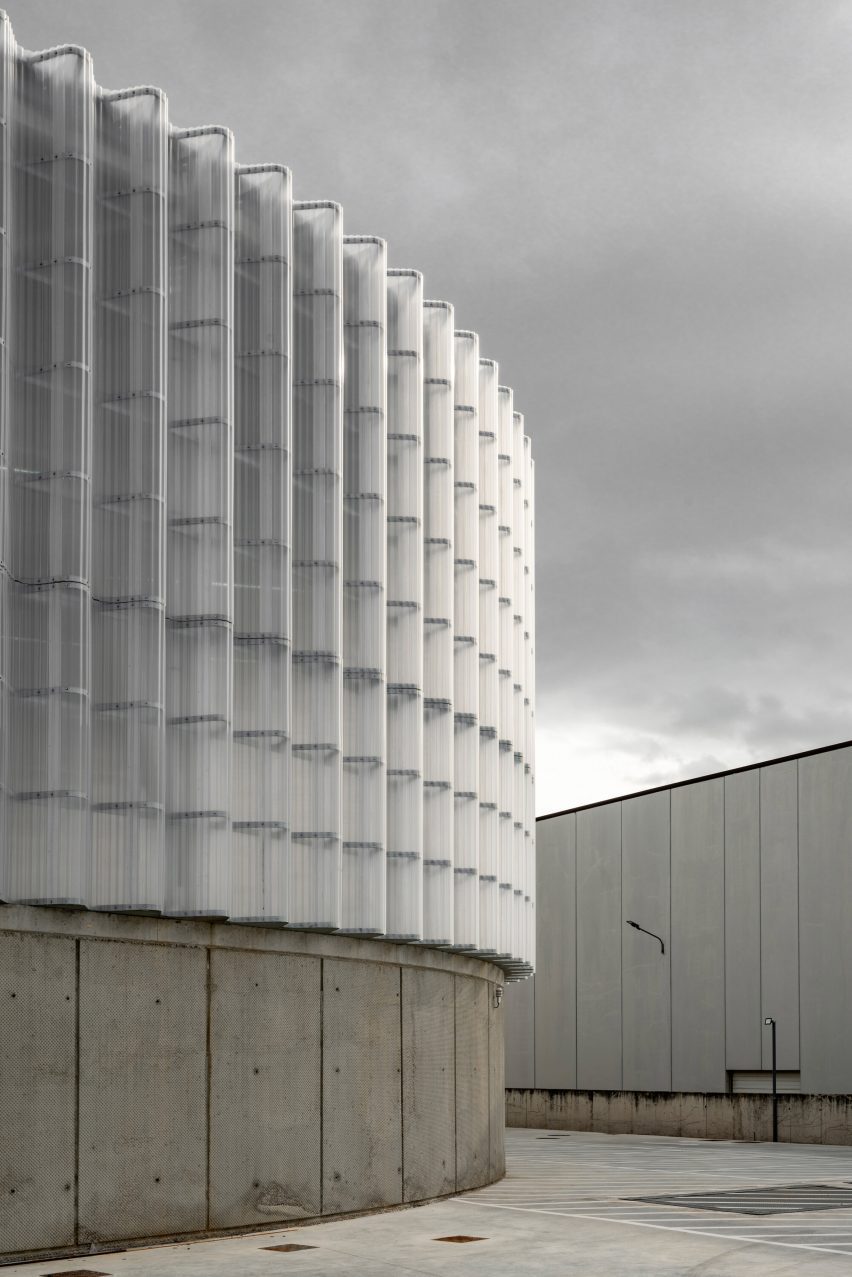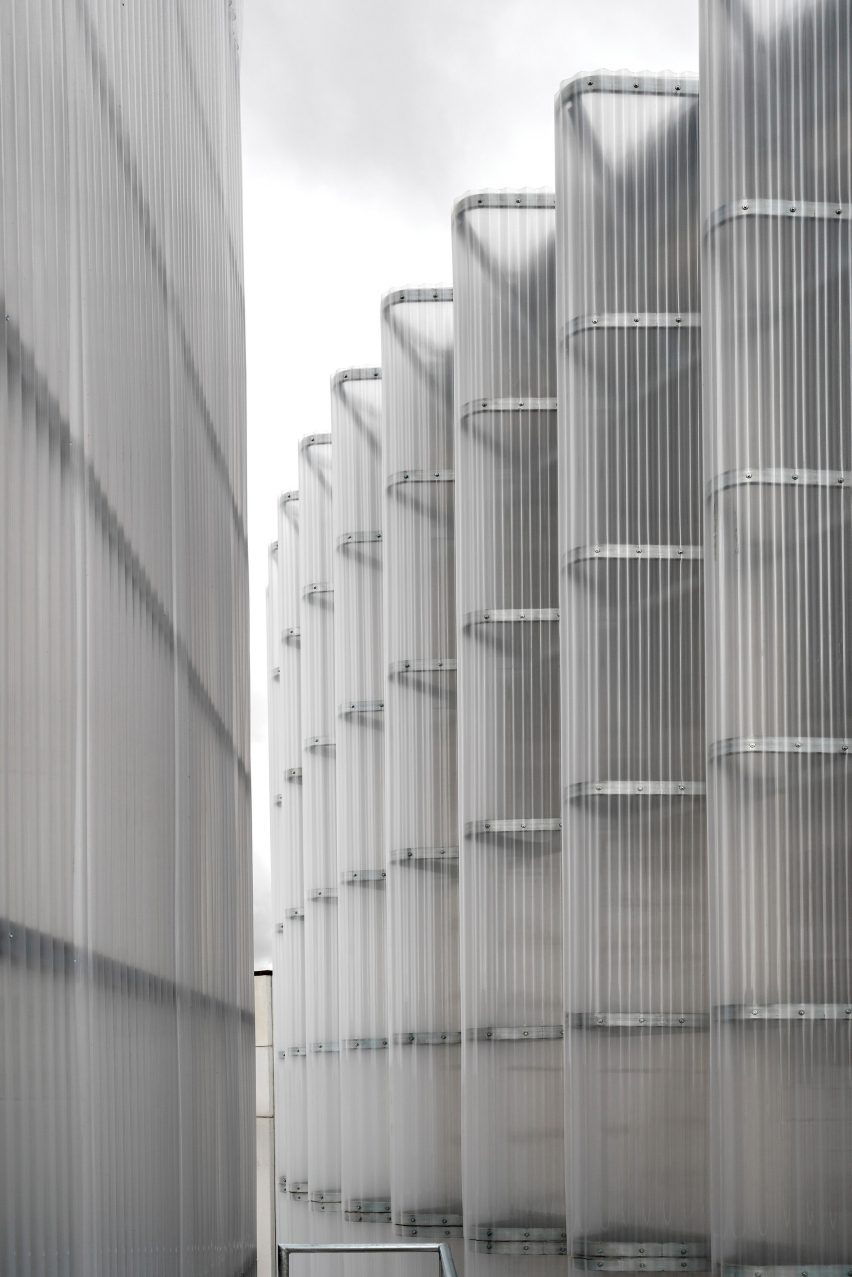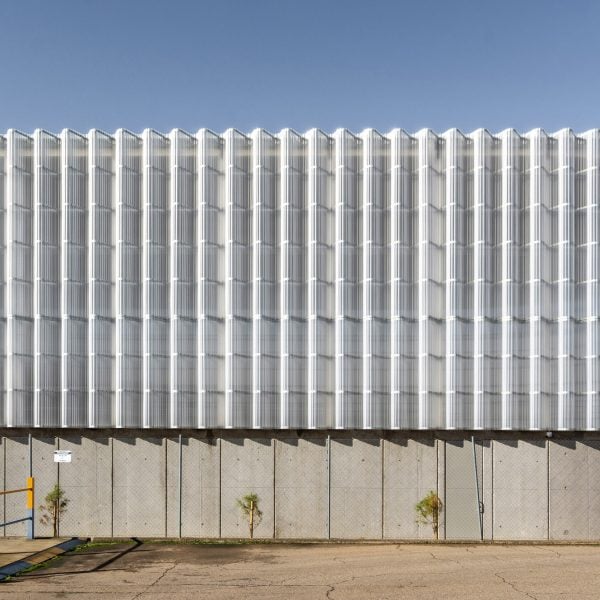Architecture studio FRPO has designed DH Palencia, a thermal power plant in Spain consisting of a concrete base topped by a lantern-like building and an adjacent tower.
Located in Palencia, the 1,960 square meter building is the center of the city’s new heating network.
It converts heat energy into electricity using renewable sources, including biomass from local forests, and makes the process visible to educate the public.
FRPO used the concept of energy and economic circularity in designing the pill-shaped building, which has a cast-in-place concrete base and reinforced concrete floor slabs.

“The round shapes connect with the ideas of a circular economy, but also with the energy cycles and the movement of people – as if it were the ambulatory of a cathedral – which are the most important part of our design,” says studio co-founder Pablo Oriol told Dezeen.
“Our intention in designing this plant was to move away from any previous reference to the idea of an energy production facility.”

The power plant’s base, which the studio described as a “heavy concrete bathtub,” supports the building’s machinery and sits above an underground biomass silo.
Above, the studio used steel and plastic to construct a translucent ribbed facade. This creates a decorative contrast to the building’s concrete base and large galvanized steel gates.

“The steel and plastic lantern reinterpret economic solutions typical of industrial buildings to create a significant connection with the community it serves: a small cathedral of energy,” said the studio.
“The facade of polycarbonate sheets – ribbed on three scales – is configured as a soft, whitish veil, supported by a delicate galvanized and painted steel wire structure.”
FRPO also wanted the facade to be translucent to symbolize the building’s purpose: visualizing the transition from traditional heating technologies, such as gas heating, to cleaner energy.
“Since the network is invisible because it goes underground, the power plant building had to be responsible for conveying the qualities of this new way of understanding energy in the city,” Oriol explains.
“It was to become a milestone in the energy transition, whose activity is constant and illuminated from within at night to become a clean energy lantern.”

A translucent tower, also clad in fluted polycarbonate, is located next to the main building of DH Palencia and is designed to clear the smoke from the heating system’s filtration process.
“It was necessary to build a structure that would support the chimneys and unite a volume into which the clean smoke pipes could be inserted for future expansions,” Oriol said. “Nothing better than the same material as the facade to complete that construction.”

Inside the power plant, FRPO designed the interior to allow visitors to observe the energy process.
A pill-shaped floor allows people to circulate through the interior, while the concrete base has a “cover” that functions as a walkway along the perimeter.

FRPO has completed numerous projects for the energy company DH Ecoenergías. The company is currently building the second factory in the series in Ávila, and a third will also be built in Burgos.
The studio has previously draped a metal screen over a concrete parking garage in Mexico and designed rotating concrete shutters for a residential building in Madrid.
The photography is by Luis Asín.
Project credits:
Architect: FRPO
MEP services: DH Ecoenergias
Structure: Mecanisme Ingeniería
Quantity meter: Jesus Eguren
Landscape: Juan Tur
Facade: Nummit
Dimensions: Marc Buxo
